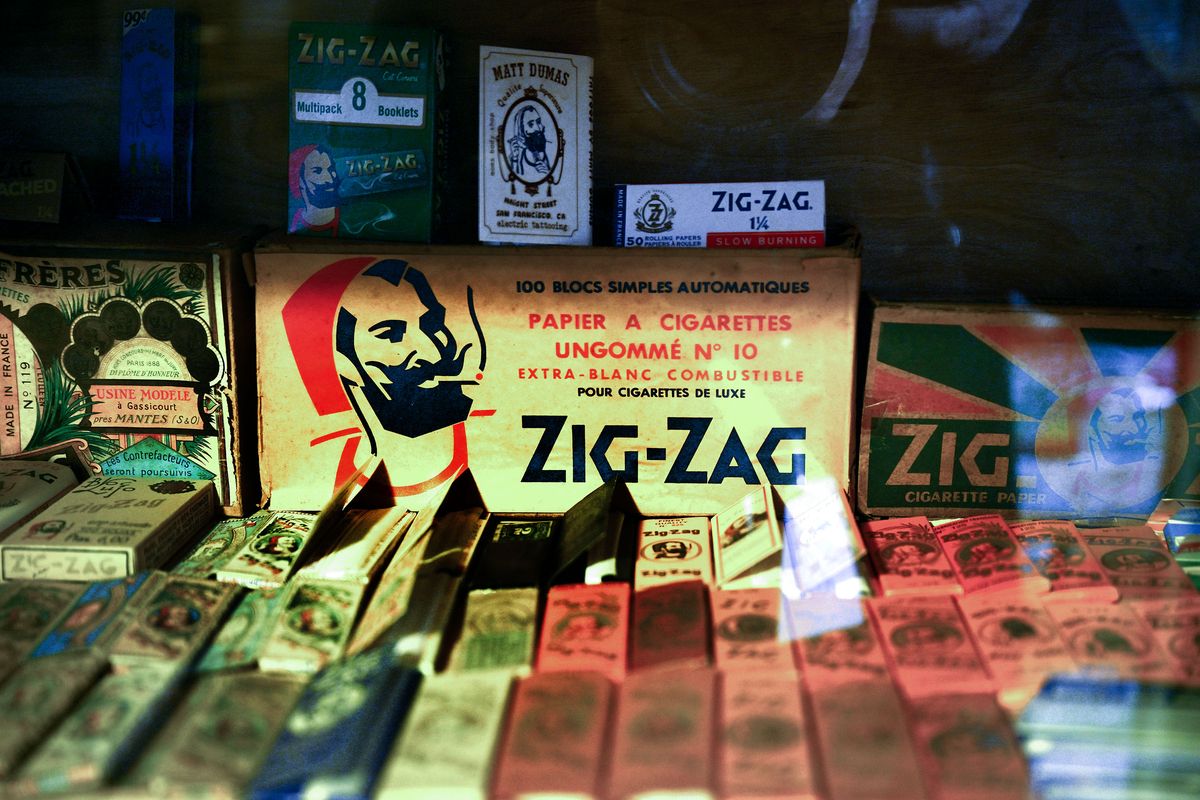The Collector: Len Pupo’s rolling in history with vintage cigarette paper collection

In 1970, Len Pupo went into a head shop in Sausalito, California, with his brother. His baseball career with the Baltimore Orioles organization had just been cut short by a hamstring hemorrhage.
Though he never smoked tobacco, marijuana had its allure, and Pupo was there for some Zig-Zag or JOB rolling papers. Instead, he found a new fascination.
“I bought a box of 50 different rolling papers for $15,” he said.
The papers included an unopened vintage package from Spain – the birthplace of cigarette rolling papers.
“It’s so rare to find unopened packages,” Pupo said. “From then on I looked for them at antique stores and later on eBay. Once I got into it, it just kept growing.”
His collection is housed in a room he calls “The Tobacco Shop.” A photo of his brother, Mike, hangs on the door.
“I dedicated this to him.”
The “shop” is filled with glass-fronted cases, cabinets and shelving crafted by Pupo.
“I don’t believe in collecting things and putting them in a drawer,” he said.
Walking through the room is like taking a historical world tour. He has papers from the Ottoman Empire, Spain, France, Australia, the Middle East, the U.S. and more.
“The oldest papers I have date from 1840 to 1860,” Pupo said.
Rolling papers came in three sizes: single, double and large. He picked up a small single pack with a brilliant floral design, fastened with a tiny metal hand.
“I call them miniature works of art,” he said. “That’s why I collect them.”
In fact, he has an area dedicated to packages featuring the work of Columbian artist Fernando Botero. Botero’s vibrantly colorful style depicts a rotund Mona Lisa, a full-figured flamenco dancer and a hefty bullfighter.
“He drew everybody fat,” Pupo said.
Many of the papers come from companies long gone. A delicate sketch of a pouch of Bob White tobacco adorns a frayed package of papers.
“When you bought Bob White tobacco, a package of papers would be inside,” he said. “A lot of these small companies were bought out by big tobacco in the ’30s and ’40s.”
Several shelves feature vertical tins or pouches of tobacco with matching rolling papers.
He’s proud of his collection of Half and Half boxes – each version has subtle differences in lettering or colors.
“I have one of the few red-topped packages,” he said. “The others are white.”
But it’s usually beautifully rendered artwork that captures his attention. Pupo opened a package with a tiny tri-fold panel depicting colorful bottles of French liquor.
“In the ’40s, when you bought alcohol in France, you got cigarettes and papers, too.”
Also, from France, several numbered boxes of “Les Cent Vierges” (100 maidens) papers. One hundred boxes were made and when held up to the light, the papers reveal nude women. Pupo said numbers 1 and 100 are impossible to find.
His collection of papers numbers just under 6,000, so choosing a favorite is difficult. He is especially fond, however, of a tiny piece of Americana.
He carefully unfolded a rolling paper package from the John J. Bagley & Co. The illustrations feature a tall man wearing a stovepipe hat and advertise extra long Tom smoking tobacco. It’s one of his oldest items. The company was founded in the 1840s in Detroit.
Not all of his papers are historical. He has a slew of rock ’n’ roll-themed items featuring bands like the Doors, ACDC and Metallica.
And those Zig-Zags he was shopping for when he started his collection?
“I have 105 different Zig-Zag rolling papers – no duplicates.”
One of them bears an 8-cent Canadian excise tax stamp.
His collection spawned a subcollection of flat 50 tins and other Tobacciana. The tins were popular in the U.S. from the 1920s through the 1930s and stored 50 cigarettes, which folks would offer their guests. The tins marketed the tobacco company’s brand.
“I have 165 flat 50s,” Pupo said. “I just got one in, that’s how I know.”
He’s partial to a blue Kentucky Winners and an embossed Players tin. Players is a subsidiary of British American Tobacco and were made in Canada.
“I was born in Canada,” he said.
The metal tins fell out of favor during World War II, and tobacco manufacturers switched to cardboard and never looked back.
Other nonpaper items include an ornate silver tray made in Occupied Japan. It features an ashtray, a lighter and space for a package of cigarettes. Nearby a brass art deco cylinder pulls open to reveal a half dozen cigarettes jutting out in metal tubes.
Another wall holds a small selection of cigar items, most of them gifted to him by a friend.
He also has a small display of rolling paper dispensers.
“I have just a few because they’re so expensive,” he said.
The fascination hasn’t faded for Pupo.
“I’m very proud of what I have. It’s not the largest collection, but I’m one of the few who displays them,” he said.
“I love looking at every one of them. It’s my passion.”